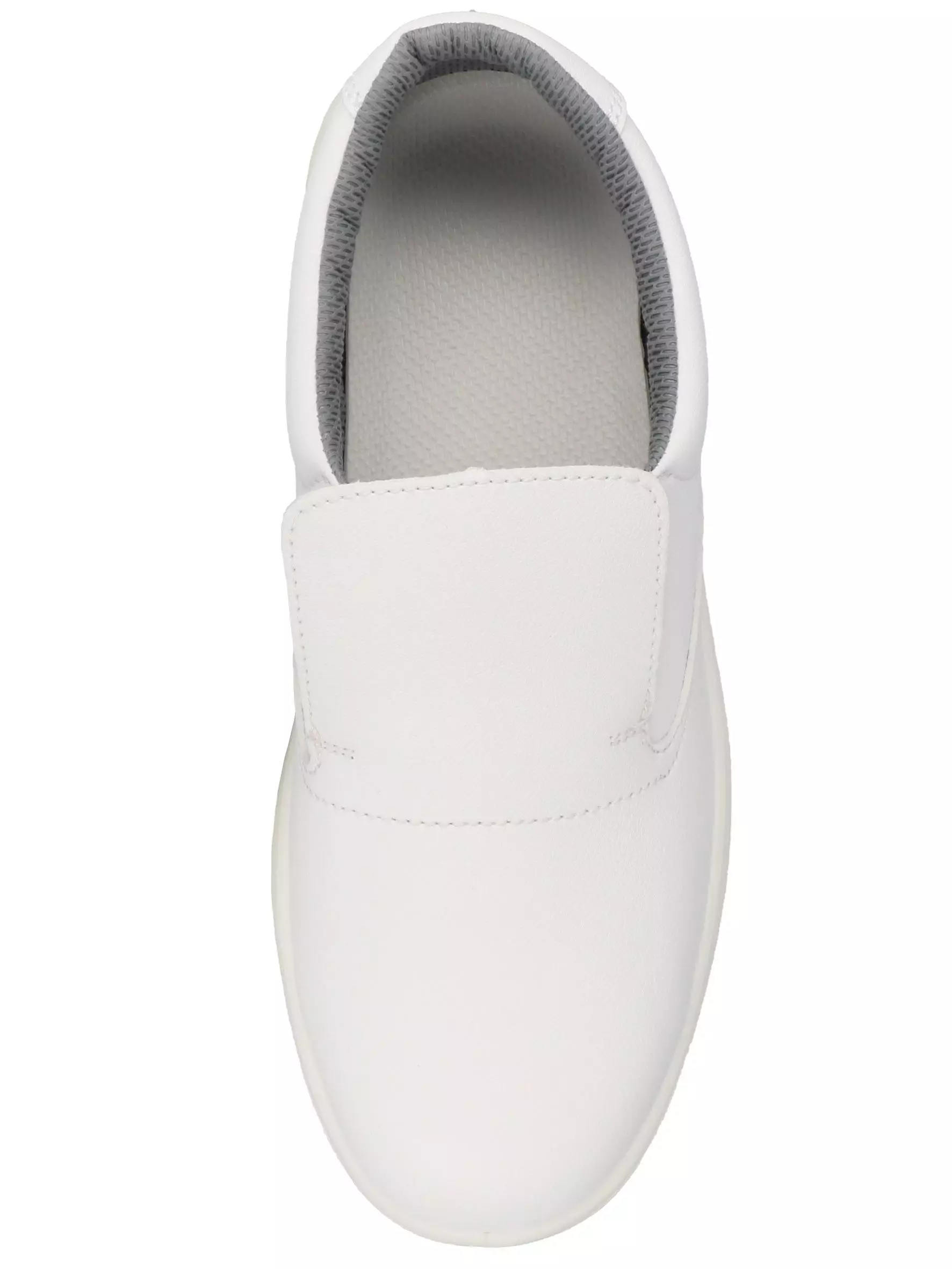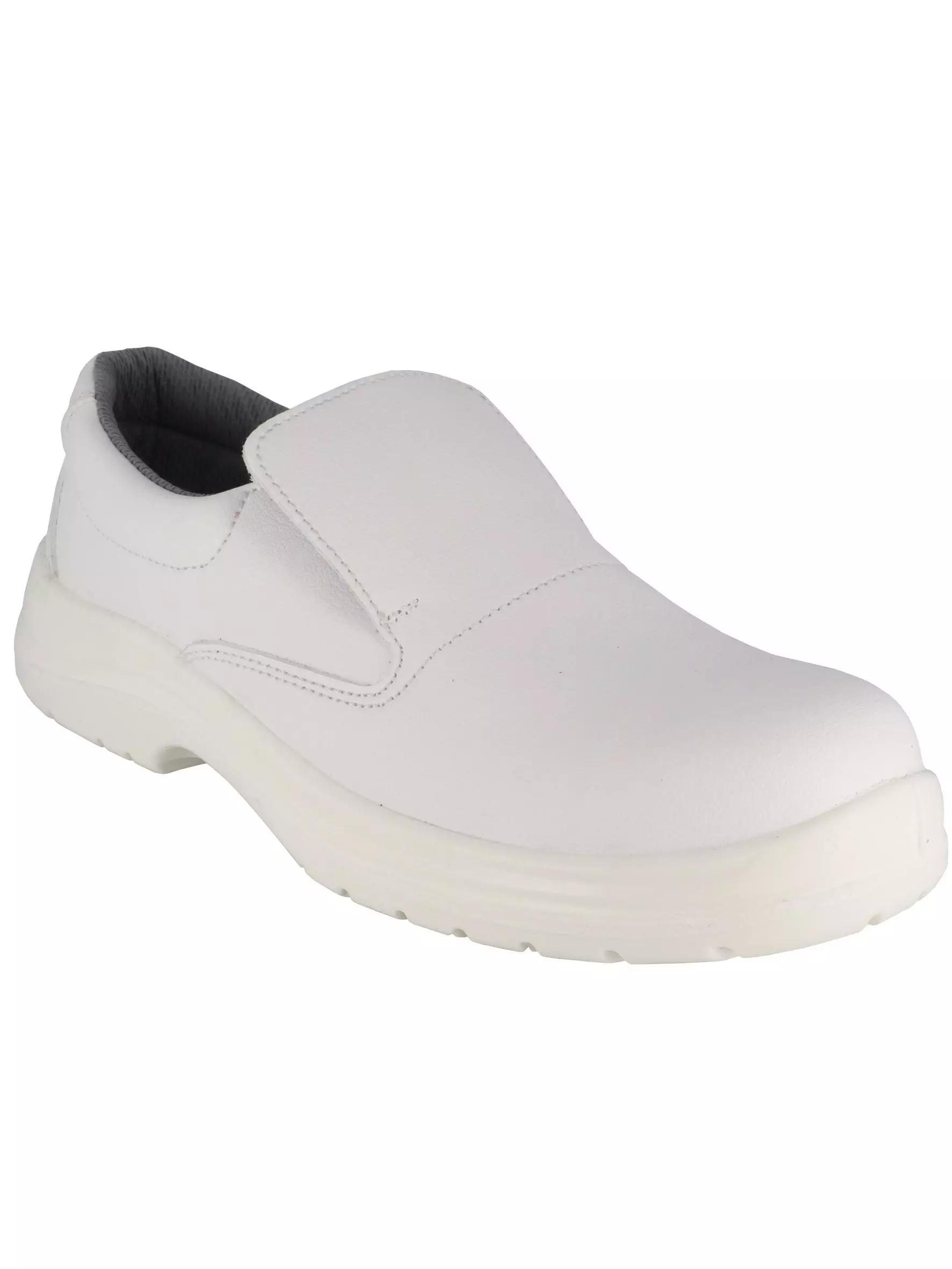
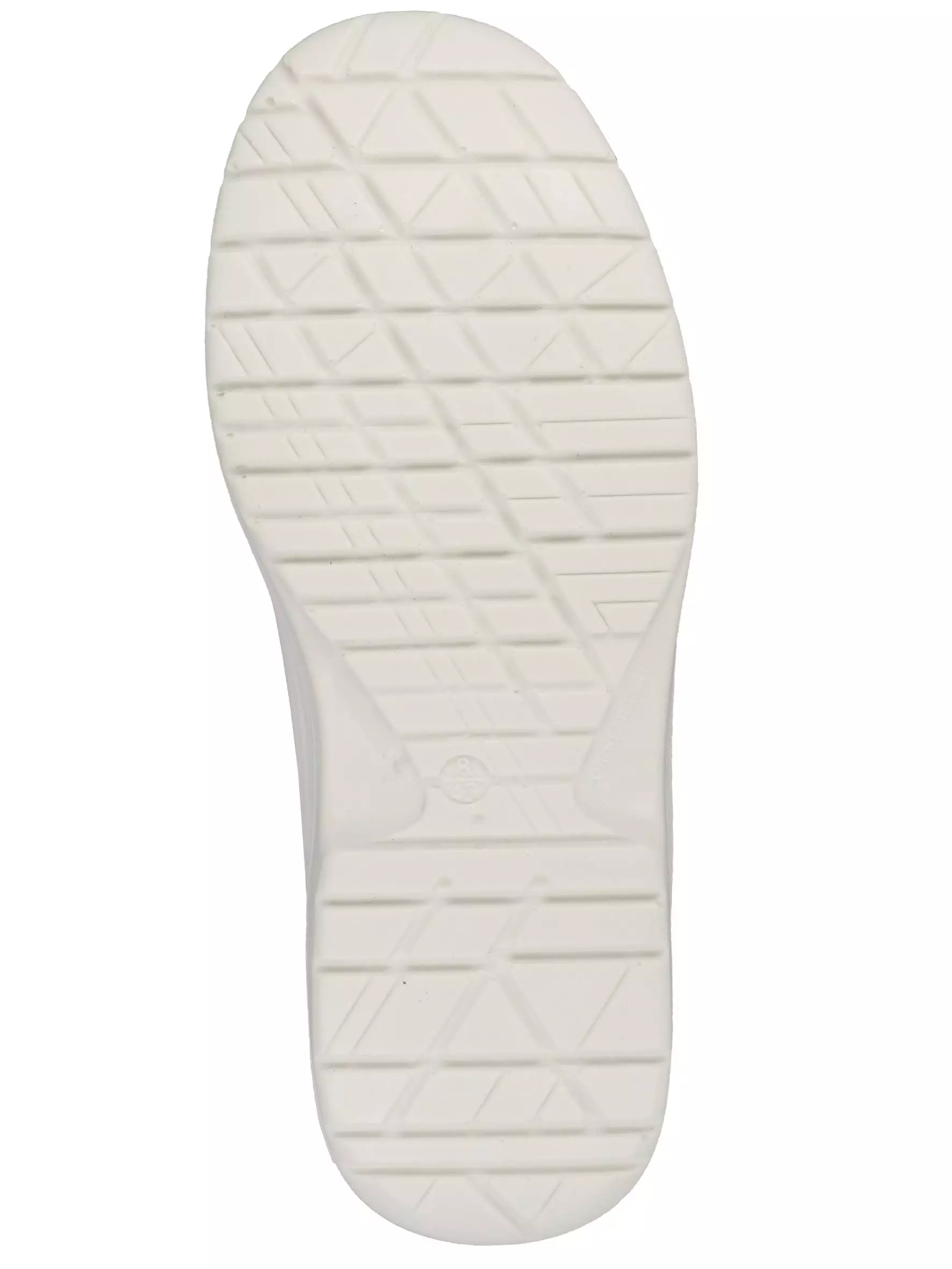
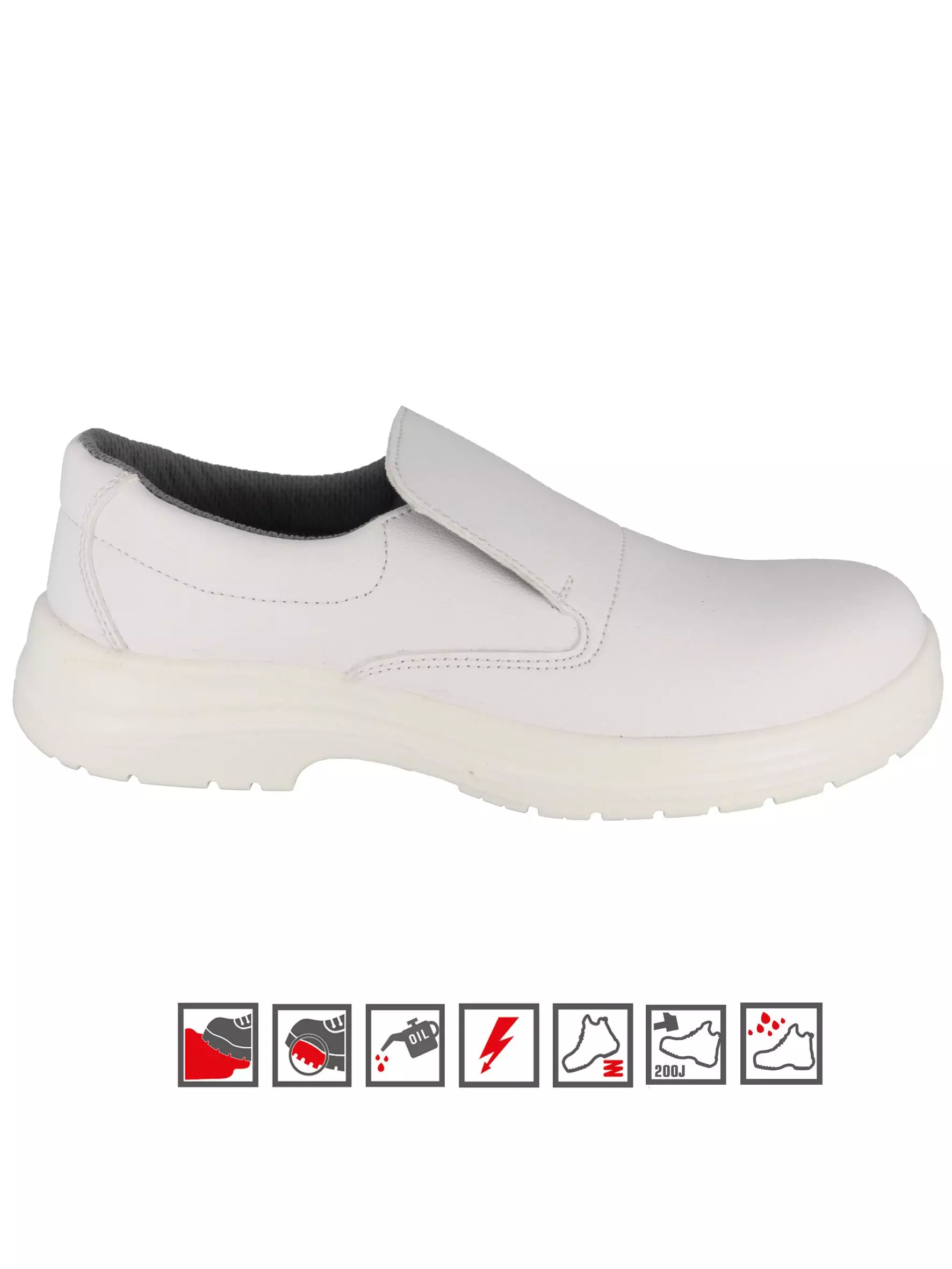
Features You'll Love
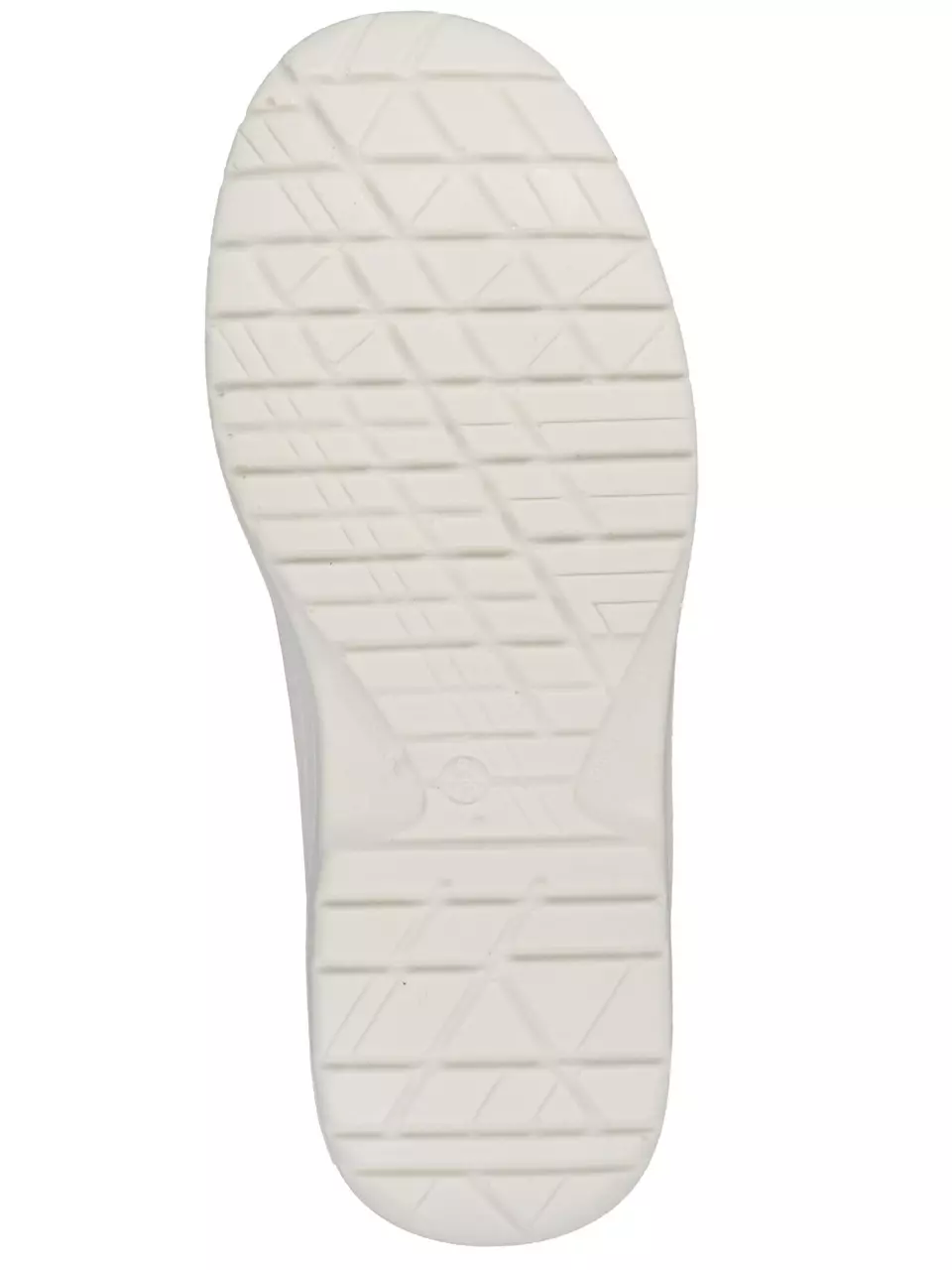
Outsole Properties · Anti Slip
Anti-slip soles provide superior grip, keeping you safe and steady on challenging surfaces.
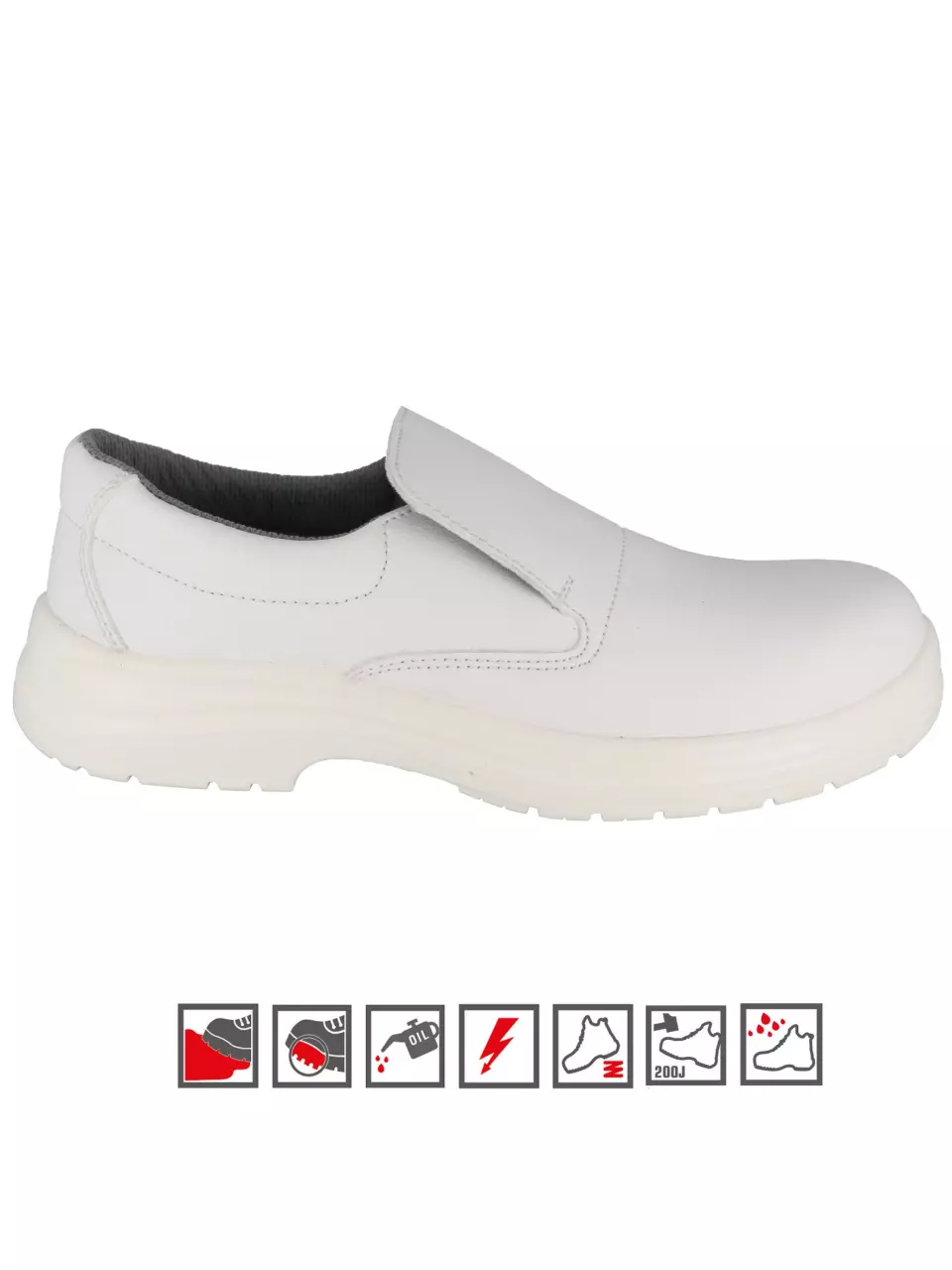
EN ISO 20345 · S2
Toe Cap Material · Steel
Provides protection from 200-joule impact with a protective toe cap, a closed heel, and antistatic properties. The heel absorbs energy and the upper part of the shoe is resistant to water penetration and absorption.
The material used in the protective toe cap, determining the level of impact protection, weight, and suitability for different work environments.

Outsole Properties · Oil Resistant
EN ISO 20345 · FO, CR
Oil-resistant soles ensure secure footing and lasting durability in oily environments.
This footwear's outsole is resistant to fuel and oil, preventing the material from degrading. It is ideal for work environments where you may come into contact with hydrocarbons like petrol, protecting the shoe's longevity and performance.
Provides protection against cutting hazards to the upper part of the foot. This footwear is made with a cut-resistant material to protect you from sharp objects like glass, metal, or tools in your work environment.

Outsole Properties · Shock Absorbing
Shock-absorbing soles provide cushioned comfort, reducing impact and foot fatigue for all-day wear.
Singer Safety
Low Safety Shoe, S2 FO SR, White
Low Safety Shoe, S2 FO SR, White
4.8 / 5
32,00 €
Choose size
Shipping fee is 7,95 € for orders under 80,00 €
Features You'll Love

Outsole Properties · Anti Slip
Anti-slip soles provide superior grip, keeping you safe and steady on challenging surfaces.

EN ISO 20345 · S2
Toe Cap Material · Steel
Provides protection from 200-joule impact with a protective toe cap, a closed heel, and antistatic properties. The heel absorbs energy and the upper part of the shoe is resistant to water penetration and absorption.
The material used in the protective toe cap, determining the level of impact protection, weight, and suitability for different work environments.

Outsole Properties · Oil Resistant
EN ISO 20345 · FO, CR
Oil-resistant soles ensure secure footing and lasting durability in oily environments.
This footwear's outsole is resistant to fuel and oil, preventing the material from degrading. It is ideal for work environments where you may come into contact with hydrocarbons like petrol, protecting the shoe's longevity and performance.
Provides protection against cutting hazards to the upper part of the foot. This footwear is made with a cut-resistant material to protect you from sharp objects like glass, metal, or tools in your work environment.

Outsole Properties · Shock Absorbing
Shock-absorbing soles provide cushioned comfort, reducing impact and foot fatigue for all-day wear.
Product description
These low-cut safety shoes provide excellent protection for food processing environments while ensuring all-day comfort. Featuring a microfibre upper with water penetration resistance treatment, these lightweight mocassin-style shoes include a steel toe cap for 200J impact protection and a polyurethane double-density sole with fuel oil resistance. The antistatic properties and slip-resistant outsole make them ideal for professional use in environments where safety and hygiene are paramount.
Product Features:
- Microfibre upper with water penetration resistance treatment
- Steel toe cap providing 200J impact protection
- Elastic fastening tongue for secure fit
- Resistance to hydrocarbons thanks to the injected polyurethane double-density sole
- Complete removable antistatic insole with shock absorption system
Technical Details:
- EVA fabric antistatic insole
- Textile lining for comfort
- Flexible and lightweight construction without midsole
- Weight: 420g (approximate weight of a size 42 shoe)
- High-quality materials and construction
Standards:
- EN ISO 20345:2022 (S2 FO SR) certification
- European Regulation (EU) 2016/425 on Personal Protective Equipment (PPE), Category II
- ISO 9001 certified
- Issued by CTC, notified body n°0075
EAN: 3660514081413, 3660514081420, 3660514081437, 3660514081444, 3660514081451, 3660514081468, 3660514081475, 3660514081482, 3660514081499, 3660514081505, 3660514081512, 3660514081529
